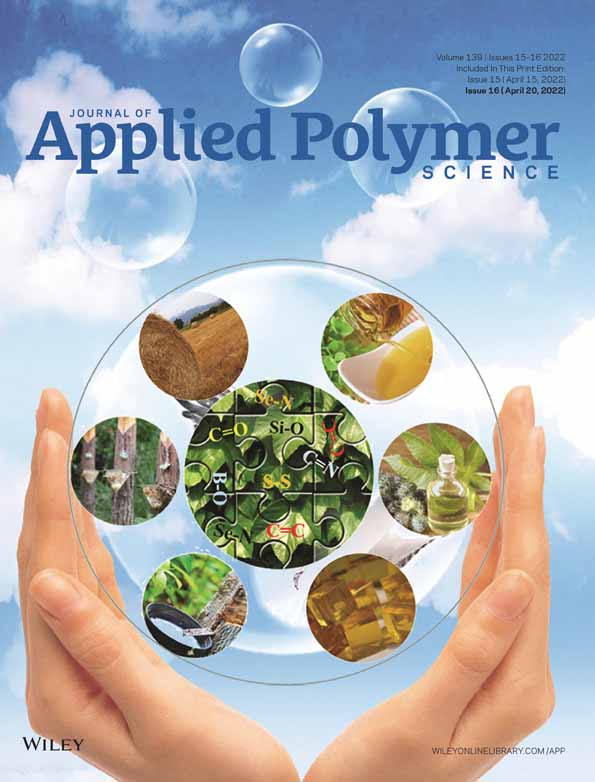Composite proton conducting membranes from crosslinked poly(vinyl alcohol)/chitosan and silica particles containing poly(2-acrylamido-2-methyl-1-propansulfonic acid)
Funding information: Materials Chemistry Research Center and Research and Graduate Studies, Grant/Award Number: RP64-6/001
Abstract
Proton conducting membranes based on crosslinked poly(vinyl alcohol) and chitosan were fabricated using sulfosuccinic acid (SSA) and glutaraldehyde (GA) as crosslinking agents. A systematic study on the effects of SSA, chitosan, and GA on membrane properties was conducted. The most promising crosslinked membrane was then chosen to form composites with silica particles containing poly(2-acrylamido-2-methyl-1-propanesulfonic acid) (PAMPS-Si). Two different sizes of PAMPS-Si with similar PAMPS contents were synthesized from vinyltrimethoxysilane precursor following the Stöber method. The process was followed by free radical polymerization of 2-acrylamido-2-methyl-1-propansulfonic acid. Field-emission scanning electron microscopy, thermogravimetric analysis, and Fourier-transform infrared spectroscopy techniques were used to analyze the sample. The results revealed the successful synthesis of PAMPS-Si. All prepared composite membranes exhibited comparable water vapor absorption, water uptake, and ion exchange capacities. The addition of PAMPS-Si enhanced proton conductivity, and the value increased with increasing loading. The size of the PAMPS-Si particles did not significantly affect the proton conductivity. These composite membranes demonstrated good thermal and oxidative stabilities.
Open Research
DATA AVAILABILITY STATEMENT
No. Research data are not shared.




